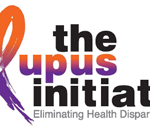

Advancing Rheumatology! may mean different things to the varied membership of the ACR. This is in part because the ACR is expected to do many things for many people, and I believe we do many things exceptionally well. I hope you will agree! Recent examples of our good work include the planned expansion of the ACR’s Simple Tasks public relations campaign website, the collaboration between the ACR and the Annual European Congress of Rheumatology to develop various classification criteria, and our concerted responses to changes in the healthcare environment to help our members continue to excel in practice and research, and to support their families.
This month, I would like to focus on another excellent product of the College: our ongoing cooperative agreement with the U.S. Department of Health and Human Services (HHS) that funds The Lupus Initiative (TLI). I am excited to share with you a review of the variety of resources available as part of TLI.
In the fall of 2009, the ACR began discussions with HHS, specifically the Office of Minority Health and the Office of Women’s Health, to develop what has grown into TLI. At the start of this project, the ACR was charged with the development of a lupus curriculum to reduce health disparities in the diagnosis and treatment of lupus. We convened ACR/ARHP members, our staff, volunteers of national and local lupus organizations, members of the pharmaceutical industry, and other stakeholders within the lupus community to assume leading roles in the creation of these learning materials.
After four-and-a-half successful years of notable collaborations, the lupus curriculum has been developed and has been augmented with the addition of a host of other state-of-the-art educational resources. As the cornerstone of our group of innovative educational tools in lupus, it is available for use by clinicians, rheumatology health professionals, educators, scientists, students, fellows, residents, and patients.
The Evolution of TLI Resources
TLI has evolved in stages. In year one, we focused on determining the goals of the project and the approaches needed to achieve them, while in year two, we underscored consensus and relationship building as TLI priorities. In year three, we moved forward in the creation and refinement of these resources. The hallmark of year four was the availability of our entire compendium of resources for providers and their patients. I want all of our members to be aware that these very high-quality materials exist and are completely free for their use, and for use by their colleagues. The collection of the ACR’s Lupus Initiative educational materials is available at your fingertips online at www.thelupusinitiative.org.

